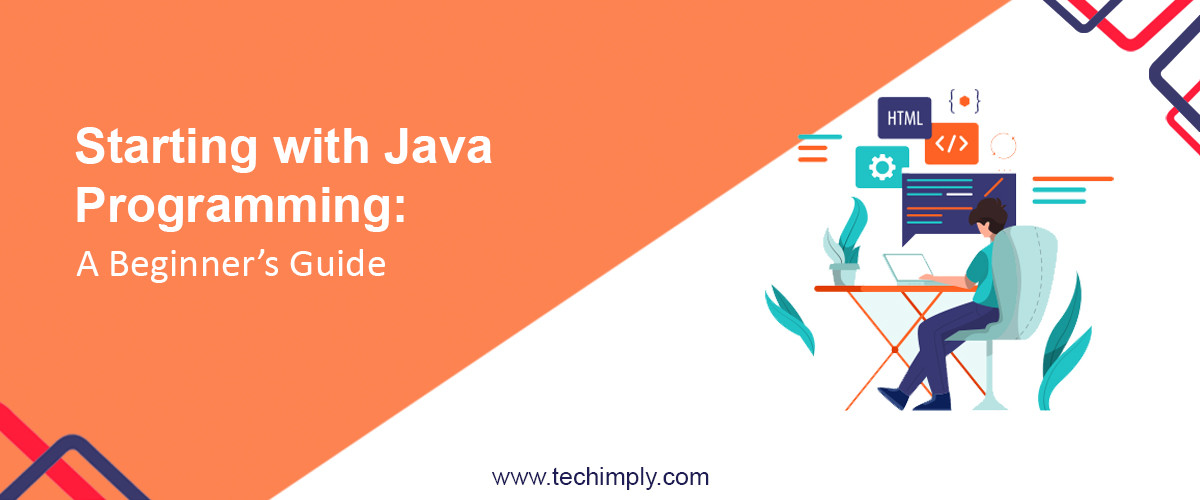Java is an object-oriented programming language based on C and C++. It is a high-level language used in developing desktop applications, GUIs, mobile applications, and web consoles. Platform independence (operating system independence) of Java programming language makes it outstanding among its competitors.
Understanding Java: An Introduction
Understanding Java basics requires understanding object-oriented programming that revolves around the concept of ‘object’ to encapsulate data and methods. This concept is especially favorable in large and complex projects that are divided among teams and need regular collaboration and maintenance. Java's object-oriented programming (OOP) is strengthened by encapsulation, inheritance, and polymorphism. Java 21 features like pattern matching for switch, records, sealed classes, text blocks, and local variable type inference (var). These enhancements streamline code and solidify Java's position as a robust and modern programming language.
-
Modularity involves partitioning a complex task into independent ‘objects’ and functions. Each object is like a self-contained module, making code maintenance and understanding a lot easier.
-
Encapsulation refers to bounding all data and methods under a single unit called ‘class’. This prevents unauthorized access and enhances security.
-
Abstraction means to hide irrelevant details of an object to minimize complexity.
-
Inheritance focuses on code reusability by making one class inherit the methods of another class, thus reducing development time.
-
Polymorphism allows writing different implementations of the same method also called function overloading. Polymorphism is achievable using inheritance.
Object and Class are two fundamental components of Java programming.
Setting up your Java Development Environment
Follow these steps for Java Installation.
-
Download and Install Java Development Kit (JDK)
-
Set environment variable to point to JDK installation directory
-
Select an Integrated Development Environment (IDE) for a good development experience
-
Verify installation and test your IDE by compiling a simple program
Figure 1: Jave program and output in Eclipse IDE
Java Basics: Syntax, Variables, and Methods
Java variables can be of any type, including int, char, float, double, and string. Java variables are of two types.
-
Local Variables that are defined inside the methods and are destroyed on exiting the method. Their scope lies only inside that method.
-
Member Variables that are defined inside the class and outside any method or function. A member variable is created with the creation of a class instance or object.
Java methods are actually C++ functions with some parameters and a return type. Java methods are of two types.
-
The instance Method is declared inside the class and accessed using class objects.
-
Static Method is also declared inside the class but accessed using the class name.
Figure 2: Example of Java syntax, variables, and methods
Working with Java: Interfaces and Annotations
Java interfaces provide a way to achieve abstraction and support for multiple inheritance. Java interface takes the form of a class that is completely abstract, or in easy words, a class with Java methods without implementation. For example, parrots, crows, and eagles share some common characteristics of functionalities that can be defined using an interface (class birds). The parrot class can then implement (override) this interface using the implement keyword.
Java annotations provide information to the compiler or interpreter. Java annotations provide metadata about a Java program. They start with the special character ‘@’. Some common Java annotations are:
|
@SuppressWarnings |
Tells the compiler to suppress particular warnings |
|
@Override |
Tells the compiler that the annotated method is intended to overwrite a method in a superclass |
|
@Retention |
Tells the compiler how long it takes to retain an annotation |
Writing your First Java Program
Start by defining a class with a Java variable and a Java method. To verify the output, instantiate the class in the main function and call the Java method. Figure 3 shows the simple code and output.
Figure 3: First Java program
Java’s Object Oriented Approach and Inheritance
Object-oriented programming in Java helps in efficient software design by making the code modular, reusable, and easily maintainable. This object-oriented approach makes easy the modeling of real-world relationships and entities. Inheritance promotes code reusability and extensibility by allowing derived classes to inherit methods of the parent class. Moreover, inheritance helps maintain a well-defined hierarchy in the Java code.
Handling Exceptions and Debugging in Java
Figure 4: Exception Handling in Java
A Java exception (either compile-time or run-time abnormal situation) disrupts the flow of a Java program; therefore, Java provides ways to handle these Java exceptions. The ‘try’, ‘catch’, and ‘finally’ blocks do exception handling in Java. Figure 4 and Figure 5 give a better idea of Java exception handling and Java exception hierarchy, respectively.
Another keyword, ‘throw,’ is used to manually throw an exception.
Some useful Java debugging skills include:
-
Use an IDE instead of a text editor
-
Use Breakpoints
-
Use the IDE’s in-built debugger to step through the code
-
Print values to the console for logging
-
Analyze variables at each step
Figure 5: The exception hierarchy
For beginners who want to deepen their knowledge and skills in Java programming, a valuable complement to this guide can be Java homework assistance from experts who will offer personalized support and deepen their knowledge of the language. This article, combined with expert help, lays a solid foundation for learning more complex Java programming topics in the future.
In summary, this article unlocks the mysteries of Java programming, paving a clear path for beginners to start their journey into the world of software development with a solid foundation in one of the most widely used programming languages.




.png)

